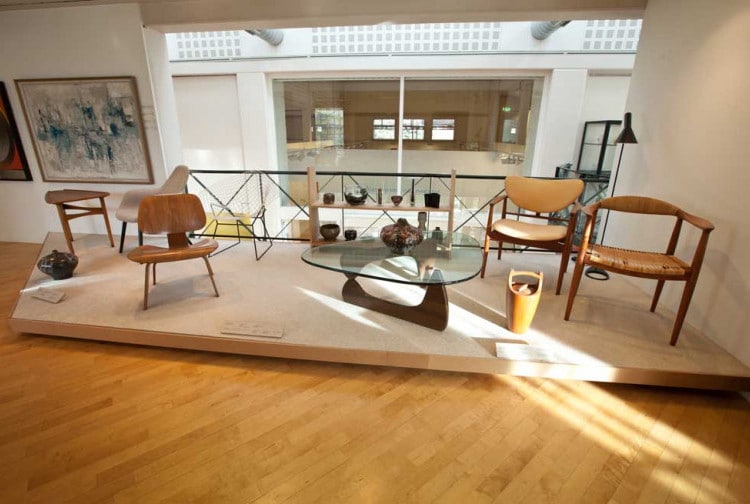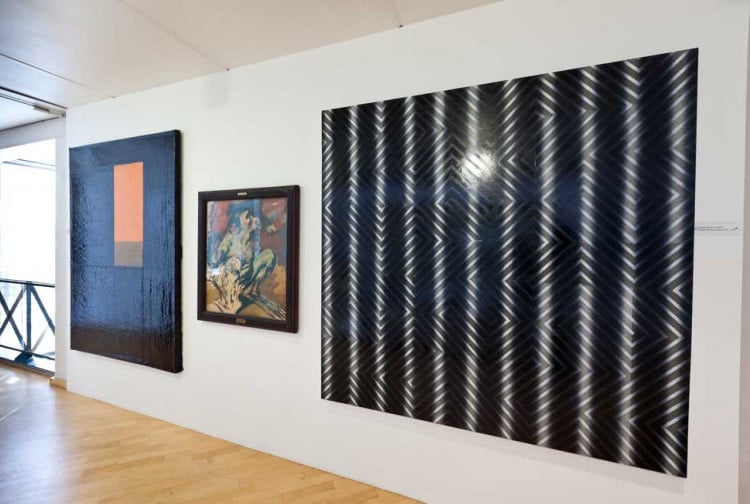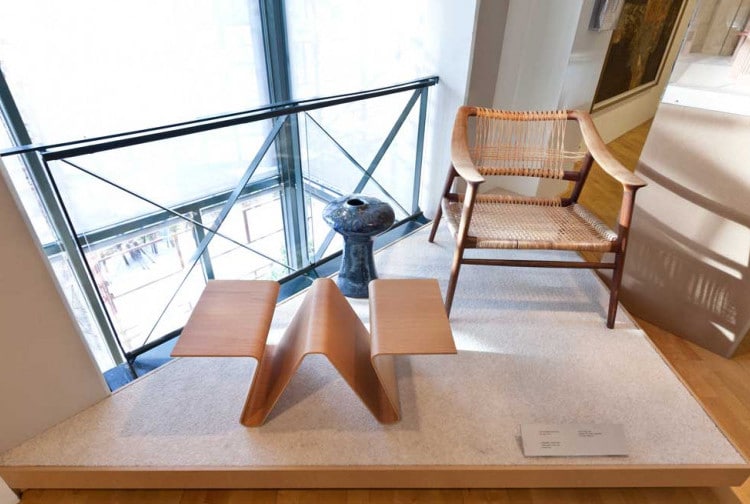Scandinavian design
Open all year
Scandinavian Design, from the 1930s to aprox. 1960
The phenomenon Scandinavian Design shows how small countries in northern Europe for a long period under modernism became the trend sets for good interior design taste over large parts of the western world. The history of Scandinavian Design - an American expression that does not exist in any of the Scandinavian languages - includes the three areas, Japan, the USA and Scandinavia. The background for simple, extremely well-designed and functional everyday furniture lies in Arts and Crafts and Jugendkunsten's sober wooden furniture, hand-blown glass and hand-turned ceramics. Much of the inspiration for this again comes from Japan, which in its time created a refined architecture and artefact culture based on Chinese role models. Japanese impulses were strong at the end of the 19th century, both in Europe and in the USA, and they are found explicitly in Danish furniture art in particular in the middle of the 20th century.
Scandinavian Furniture Design often uses organic, natural materials, such as wood, willow and leather. The tree was shaped so that it both expressed and fit the body's shapes and function. Much of the best Scandinavian furniture art used finely shaped wood - often in exotic woods such as teak, rosewood, mahogany, but also in maple, birch, oak, beech and ash. In addition to unfinished solid wood work, these designers often used plywood. The veneer was strong and slim and it could be molded. This is seen in much of what was created, from Charles and Ray Eames' (LCW) (1945) to Norway Says, in the newspaper table Papermaster (2002).
It was from the late 1930s onwards - with the Finnish pavilion at the World's Fair in New York - and especially in the 1940s and early 1950s that Scandinavian design influenced American design. The connections between Scandinavia and the USA had some main channels: Eliel Saarinen and his son Eero Saarinen, were Finnish-born architects and designers who left a strong mark on American form from the 1920s, when the famous Helsinki architect Eliel Saarinen and his family emigrated to America and in 1932 started Cranbrook Academy in Michigan, along with newspaper magnate and philanthropist George Booth. Fredrik Lunning, director of the Danish design company Georg Jensen in the USA, marketed Danish and Scandinavian objects over there, and he created the Lunning Prize, which went to the Scandinavian designers, but awarded from America. In addition, the two curators of design at the Museum of Modern Art , Eliot Noyes and Edgar Kaufmann jr., Great knowledge of and interest in Scandinavian designers. So popular was this that Alvar Aalto - who had designed the Finnish pavilion at the World's Fair in New York - in the late 1940s was commissioned to design the large student house - Baker House - at the Massachusetts Institute of Technology. Danish Finn Juhl was commissioned to furnish large parts of the new UN building in 1952, including the whole of the great Council Chamber. And when the television company CBS was to have a televised debate between the presidential candidates John F. Kennedy and Richard Nixon in 1960, the candidates were placed in the Danish Hans Wegner's The Chair. This phenomenon continues. When the Museum of Modern Art was rebuilded, they engaged the Japanese architect Yoshi Taniguchi and all restaurants, rest areas and coffee shops in the new museum, that opened in 2004, to be filled with Danish furniture, including by Poul Kjærholm.
For the Permanent Gallery, Drammens Museum has now acquired a number of exquisite examples of the best in Scandinavian and American modern design. Of particular importance are the couple Charles and Ray Eames. Their most significant invention was to be able to double and multipress plywood. This resulted in some of the most beautiful and elegant wooden furniture of the post-war period, which was made according to their drawings and manufacturing methods. Here at the exhibition you can see a copy of their perhaps most famous chair LCW (Lounge Chair Wood) from 1945. Charles and Ray Eames worked in a related design language with European designers, but they again became a significant source of inspiration for Scandinavian designers. Thus, both Arne Korsmo and Grethe Prytz Kittelsen were inspired by The Eameses, and Danish Arne Jacobsen's most famous wooden chairs are inspired by their molded veneer chairs.
Among the American designers represented here were Eero Saarinen, Charles Eames and Harry Bertoia, affiliated with the Cranbrook Academy of Art. Isamu Noguchi was born in Los Angeles, with American mother and Japanese father. He grew up in Japan and returned to the United States as a 14-year-old to continue his education there. In this collection, both Noguchi's glass table and Eames & Saarinen's Organic Chair are newly produced, which of course also applies to the fairly new Papermaster from Norway Says. The rest of the furniture is antique copies. Organic Chair was originally made in a very small edition, but after the chair won first prize at a design competition organized by the Museum of Modern Art in 1940, it was put into series production, and it is still being made. The same applies to Noguchi's classic, which was first produced in 1944, but which is still produced and on sale. Drammens Museum sees this as an interesting communication point, since this is a design that has been drawn and created with serial production in mind. This applies to several of the classics, including LCW, even though the chair seen here is from the 1950s and produced by the well-known furniture factory Hermann Miller. Scandinavian Design is inextricably linked to modern architecture, especially villa architecture. Gradually, a warmer, more organic version of Central European function developed in Northern Europe and the United States, as executed by the Bauhaus architects, de Stijl and Le Corbusier. In such houses, the machine aesthetics were stronger than nature, and the furniture was often more angular and harder, with the use of flat wooden boards, bent steel pipes and hard, unstuffed leather. Nordic modernism - with inspiration i.a. from California - provided the framework for open, light and airy homes, where large windows drew nature into the house and where floating space plans could lead the movement out through large patio doors and out into the garden and nature plot. Such houses were often decorated with modern Scandinavian furniture and utensils. Drammens Museum has therefore purchased a number of ceramic works and glass art from the time and all four Scandinavian countries are represented by leading designers and artisans. The use of such beautiful objects was often inspired by Japanese homes, where a simple twig or flower in a vase formed the entire decoration. The use of solid-colored and warming wall-to-wall carpets also became part of the post-war decor taste. It created an intimate atmosphere and increased the feeling of pleasure and relaxation. Modernism is inextricably linked to democratic ideals of individual liberation and a healthier diet and way of life. - Drammens Museum presents its collection of Scandinavian Design on a light woolen rug, both to remind of the use of such objects in the private environment and to give the form-fitting and beautiful objects a neutral background that allows them to stand out as clearly as possible.
The new exhibition of purchased 20th century material is made possible by generous financial support from the Drammen Museums Association.
Curator: Åsmund Thorkildsen, March 2006
Venue
Monday to Friday 11.00 - 15.00
Wednesday 11.00 – 18.00
Saturday 11.00 – 16.00 (free admission)
Sunday 11.00 – 16.00





